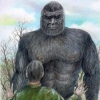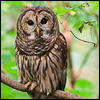Leaderboard
Popular Content
Showing content with the highest reputation on 09/12/2016 in all areas
-
Reminds me of a funny story. I was about 13 and my father and cousin and I had a bonfire going on the ranch. Dad was drinking beer and telling stories. I thought I was some sort of mountain man and I snuck away from the fire. Why? I have no idea but I had inherited my fathers inclination for pranks. I was wearing a gray hoodie with a black oakland raider t shirt on underneath. I could hear him telling my cousin who is just months older than me that he could see me because the army trained him to use the side of his eye to see better at night. I took that hoodie off and put it on a snow berry bush and zipped it up. And started very slowly circling the fire. My father kept pointing to the hoodie and declaring he could still see me. His pickup was about 20 feet away from the fire and the ice chest was in the back. I just crawled under the pickup and waited. When he came for another Rainer pounder and throw away his empty I growled and grabbed his leg:) Needless to say he went one way and the cooler of beer went the other. He wasnt very happy with me. I had alot of fun with my dad and miss him sorely.2 points
-
I know the military used to use red light to preserve night vision as the rods didn't react to red light, but today, low levels of red, green, and green-blue are what's being used. Any color if bright will bleach out Rhodopsin - which will take about 30 minutes to recover your night vision - even red, green, or blue-green. Depending on bleach-out, could take an hour to go back to full night vision. Or, you can use an eye patch over your shooting eye.1 point
-
When I read a couple of those Missing 411's, I was thinking the same thing. Red is immediately identified with blood. As in wounded. Good point.1 point
-
I think the wearing of bright colors mainly involves the color red more than other colors. In the animal world red signifies wounded or dying prey that is bleeding. To a predator this means easy pickens. I know this is true from hunting and fishing. So some animals can see the color red.1 point
-
I have both a deuteranomaly and protanomaly, which enabled me to see hiding positions where the enemy had cut greenery that morning to camoflage positons from the air. At night, in darkness, none of us have color vision. We can't even look directly at a point and get a look at an object - having to look to the side of the object to see them as our cones are not in the center of our eye.1 point
-
Lot of questions in there. I am convinced they have exceptional night vision. I don't think that comes at the expense of color vision. The reason is simple, the sheer size of the eyes. If their rods and cones are packed as densely as ours and their eyes are much bigger, then they would have many more of both. The bigger the eyes are, the less necessary a tradeoff becomes. Geometry meets biology. I don't, however, know that they have color vision. I assume so, but it is an assumption, not knowledge, not experience. I do know that something very very heavy with a long stride walking around out there on 2 feet in the dark has night vision far beyond mine. That I've experienced. Consider the possibility they can tell whether fruit is ripe by smell, not sight. I went for a drive Friday night and I could smell the huckleberries when I rolled the windows down. My nose isn't particularly good. Too many household chemicals. I bet they can tell better than I can just by smell. There could be other things ... if they're familiar with the kind of fruit, then perhaps the surface reflectiveness changes, something they could see without color vision. Talk to a person who is colorblind and find out what their visual cues are. I'm not sure your question about bright colors is in the context Paulides intended. I do avoid bright colors now even more than I used to. There is a second component to many of the cases Paulides mentions bright colors in which you seem to omit: the unexpected appearance of bad weather immediately following the disappearance which interferes with the search. This, at least as inferred by Paulides, seems to imply one of two things: either whatever is doing the abduction can control the weather or whatever is doing the abducting has better forecasting ability than we do ... or at least than we did at the time of the incident since many are older cases. Regarding bright colors, I do not worry about their visibility from ground level, I worry about their visibility from above. The day my compass and GPS both went wonky and would not settle on North, I was ... concerned. MIB edit / adding addendum - for more about weather, look at the North America and Beyond volume in the index under "bad weather".1 point
-
Sure, although as I noted elsewhere I'll be off-the-grid next week, so I won't be able to answer things further for a while. If you go to page 2 of the Bigfoot in Vermont thread in the Northeast sightings area, you'll find a 40-page+ analysis I did of the 600 or so sightings I had cataloged at that time (2 years ago). On pages 20-21 I discuss the 1970s wandering Bigfoot. On page 29, I have a map w/4 groupings of encounters which may be related - one of these four is not like the others. Not to be unduly cryptic, but I'm still recovering from an injury that limits my typing, so rather than re-type everything here, I'll invite you to download and skim/read my tome.1 point
-
There seems to be a common theme among researchers that any circumstantial evidence they present will be "torn to shreds" by skeptics and made fun of. I think this is incorrect. It happens when people present their findings as a fact that it was BF related. I think the presentation has a lot to do with how it is received by the community. For example. When people say: "We got a recording of BF howling and we've eliminated every other possibility" and take it personally when somebody objects, it won't go well. On the other hand, if one presents the same recording as "we recorded something interesting, it could be a BF, but we're not sure", it will get a much better reception and respect. Objectivity in your own data is key. Frankly, you should be the harshest critic of your data, because you collected it and know more about it than anyone else. You should be looking to poke holes into it and look for holes other people identify instead of trying to defend it. You may end up dismissing the objections, but they are valuable feedback. You want the greatest number of eyeballs on it. If you're straight up about it, people will recognize you are just presenting what you got. Instead of making claims about it, just lay it out there, it is what it is. Everyone benefits by learning from it. It's certainly been the case in my experience.1 point
-
Here's the thing. I already spent months in this location. Been there. Lived there. I know the winds, I know the weather. I know the concealment, the breaks, angles, sun travel, shadowed areas, depressions. I know exactly what I need to feel a bit more secure than being in a tent, and losing sleep many nights with these things walking around that tent, then just standing there doing God-knows-what, tossing pebbles at the tent, and slapping at the tent. I don't need that. We were also greatly undergunned. Never again. Prudent planning is not commando stuff. It's just that I hate surprises. The high wind landings were especially interesting.1 point
-
Drew - The first mountain was mined for gold from the 1860s to the very early 1900s. There were no rock trucks, Henry Ford hadn't even built the Model A yet. By the 1940s the area was essentially abandoned except for some small claims that are still maintained today on a mom-n-pop recreational weekend scale. The ore was partially processed on-site and the concentrate was hauled out by pack train. The roads post-date the industrial scale mining activity. The other mountain ... that's a good question, I don't know how the material from the top was removed. The present road was never suitable for a normal dump truck, never mind a big earth mover. There's a logging trunk, a very major one, somewhat down on the west flank. They may have used a conveyor, that was done here some. The current road to the top is a collection of hairpin switchbacks too short for a double cab pickup to go up without backing an jockeying around them. It was built to access a fire watch tower that sat on one corner of the leveled off mountain top. That was removed in the 1970s and the road hasn't been maintained since. Dangerous? Yes. So? There was no OSHA, little if any regulation, lives were cheap and many were lost ... that's the history of building the west. No different mining, road building, logging, farming. I'm not divulging the specific locations. MIB1 point
-
These critters are troubling. To be sure. But knowing that there are people out there like you? That's frightening. While this sarcastic suggestion is tongue-in-cheek, thinking like this is exactly why all the big groups, all the big money fail to find diddly squat. Knowing folks know that helicopters in mountains is a bit tricky - and they have their own sets of limitations. Noise, being the first. Lighter-than-Air craft in mountains are very unstable, and with some of the winds that come up - they'll be blown across three counties - or caught in an updraft and possibly lose control. When I heard a group was going to hunt these things with a blimp - I laughed out loud. Oh. I was a commercial lighter-than-air pilot - so I know a bit about it. Cryptic, from your limited suggestions, which indicate a certain level of inexperience in equipment, terrain, and men, maybe you should stick to something else. There's always Barber College.1 point
-
This is the guy who said he saw little aliens jump out of fire rings and charge him recently when he was camping with Matt Johnson. I would have used the restroom at that time to be honest and would have grabbed some fresh air personally.1 point
-
I haven't seen any of your scalps. I will say it yet again. I'm not a BF hunter.1 point
-
Yuchi1 Yes, I needed this laugh! These guys are not like big bucks or even like deer. They have a mind of their own when you come down to it. You know Faracher you start talking clans and all. You be in a heep of trouble with all them . But a good picture would do wonders and I have tried , I almost thought I had a good picture of one because of their stealth it turned out to be a stumped. But I had to walk up to it with my bow to make sure. Yes big time heart pounding there. Felt good when I knew it was a stump.1 point
This leaderboard is set to New York/GMT-05:00






